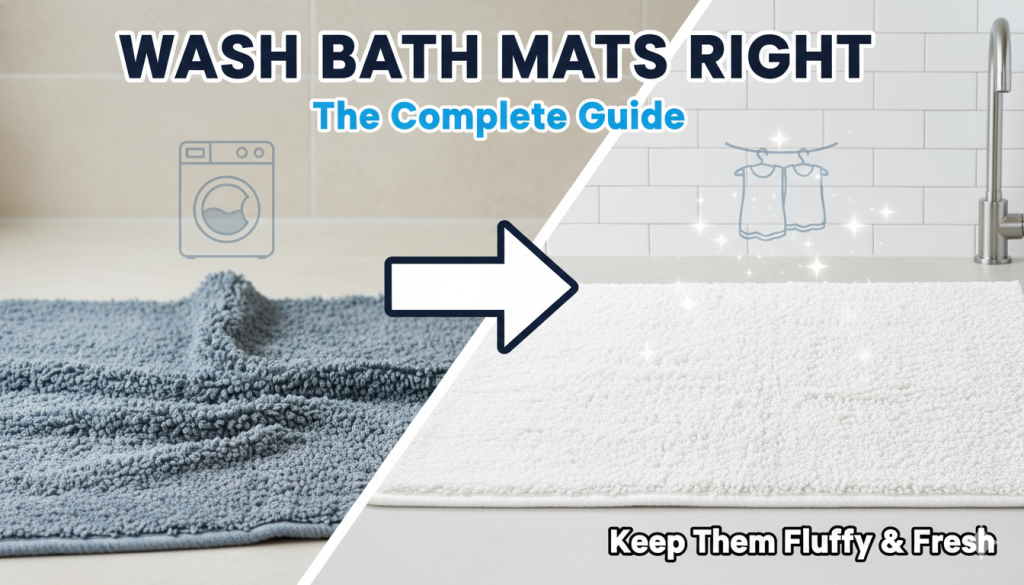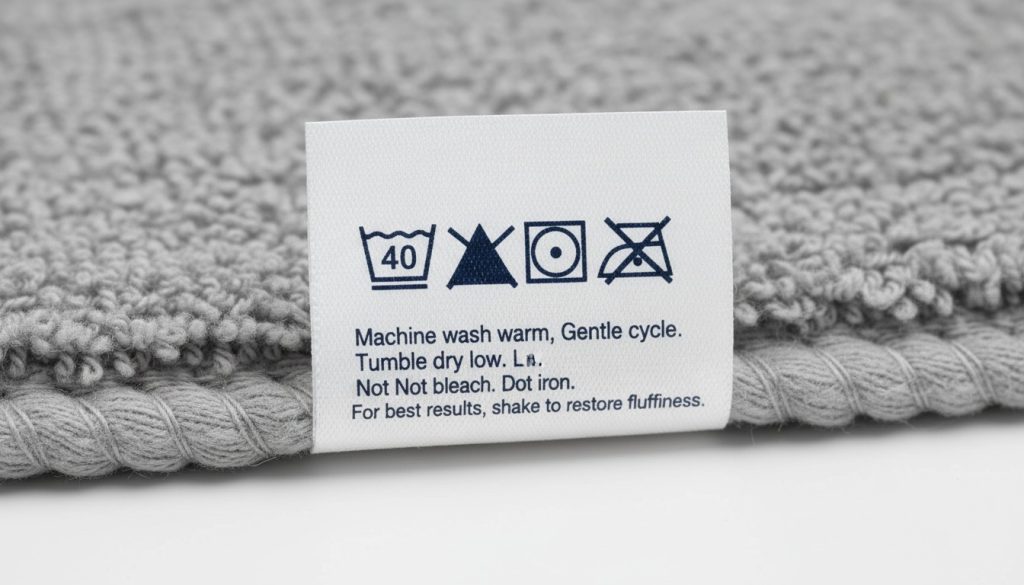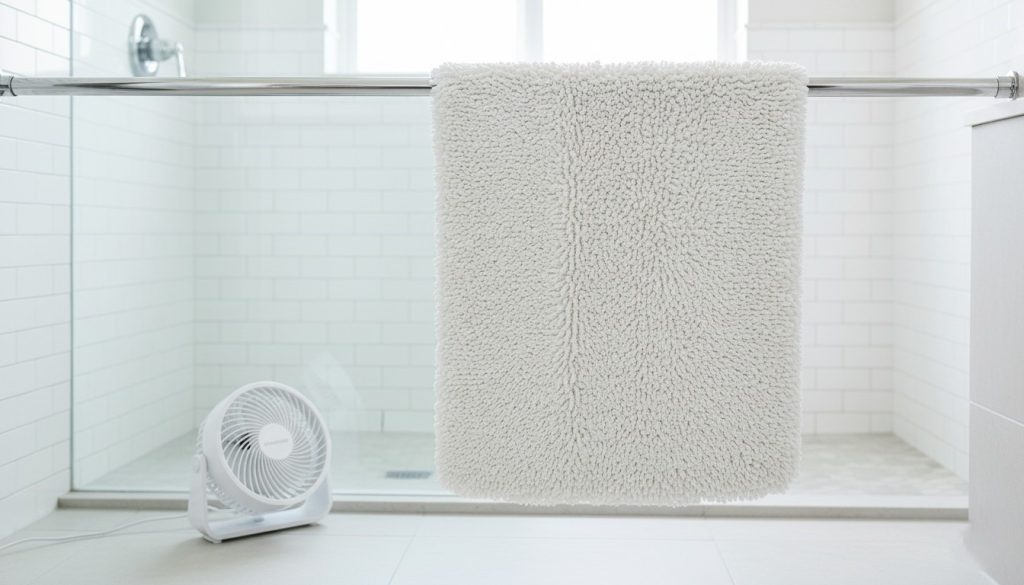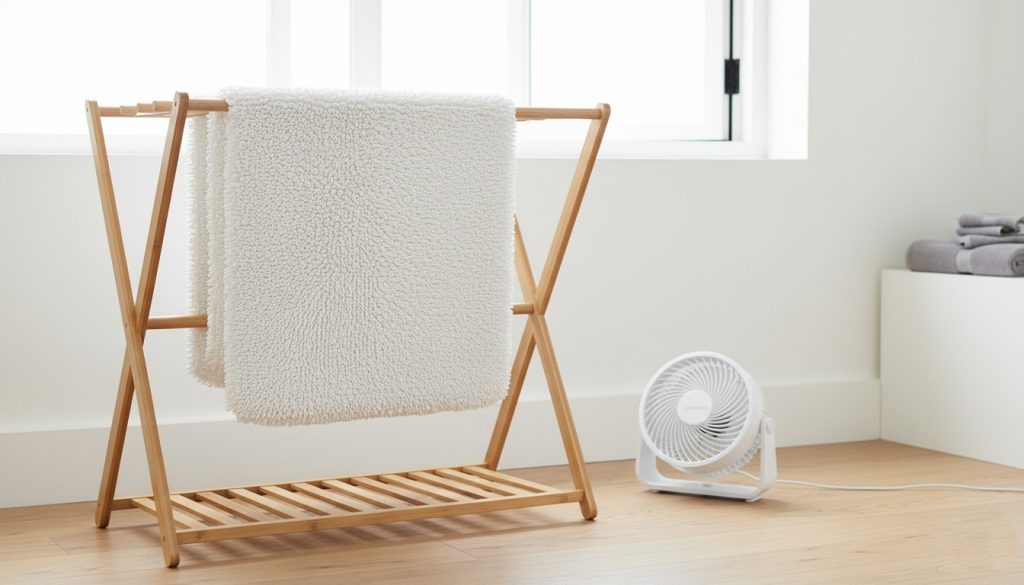
I’ll be honest—I didn’t think much about how to wash bath mats until one of mine turned gray and stiff. You know that feeling? You step out of the shower onto something that feels more like cardboard than a plush mat. That’s when I realized I’d been treating these everyday items like they were indestructible. They’re not. Over the past few years, I’ve learned that proper care makes a huge difference in how long bath mats actually last and how good they look and feel.
If you’re tired of replacing bath mats too often, or if you’re just not sure about the best way to care for them, this guide walks you through everything I’ve learned—the hard way and the easy way.
Why Bath Mats Need Real Care
Before we dive into the how, let’s talk about the why. Bath mats trap moisture, absorb soap residue, and collect dead skin cells every single day. That’s not meant to gross you out—it’s just reality. Without proper washing, they become breeding grounds for bacteria and mildew, they start to smell, and the fibers break down faster.
The good news? Washing them properly isn’t complicated, and it doesn’t take much time. You just need to know what you’re doing.
Machine Washing Your Bath Mats: The Easy Route
I’m going to start here because this is what most people do, and honestly, for the majority of bath mats, it’s the right choice.
Yes, you can wash bath mats in the washing machine. I do it all the time. Most bath mats—whether they’re standard cotton, microfiber, or a cotton blend—are completely machine-washable. The key is knowing how to do it so you’re not accidentally destroying them.
The first thing I check before tossing a mat in the wash is the care label. I know, I know—who reads those? But they’re actually helpful. If the label says machine washable (and it usually does), you’re good to go. If it mentions hand washing only or has any special instructions, skip to the hand washing section below.

Setting Your Machine for Success
This is where a lot of people go wrong. They throw the mat in with a regular heavy-duty cycle, and the aggressive agitation beats the fibers to death. After a few washes, the mat loses its softness and starts shedding.
Washing machine settings for bath mats should be gentle to moderate. I typically use my washing machine’s gentle or delicate cycle when I’m washing bath mats alone or with other mats. This cycle uses slower spin speeds and gentler agitation, which keeps the fibers intact while still getting everything clean.
If your mat is really dirty—say, it’s been sitting in a humid bathroom for months and has some stubborn stains—you can bump it up to a normal cycle, but try the gentle cycle first. You might be surprised at how well it works.
One thing I’ve learned is to not overstuff the washing machine. Bath mats need room to agitate and rinse properly. I usually wash no more than two or three mats at a time, depending on the size of the machine.
Getting the Temperature Right
Water temperature for washing bath mats matters more than you’d think. I’ve made mistakes here too, so let me share what I’ve discovered.
Warm water—around 110 to 130 degrees Fahrenheit—is my go-to temperature. It’s hot enough to sanitize and help break down soap residue and body oils, but it’s not so hot that it causes excess shrinkage or fades colors. I’ve noticed that warm water also helps keep the mat fresher longer between washes.
That said, if your mats are brightly colored or you’re worried about fading, cold water works fine. It won’t get them quite as clean, but combined with a good detergent, it gets the job done. Some people use cold water exclusively to preserve colors, and I respect that choice.
I’d avoid hot water unless the mat is really grimy. Hot water can cause shrinkage, especially in cotton mats, and I’ve learned that lesson the hard way with a favorite mat that became an unusable wrinkled mess.
Hand Washing Bath Mats: When and How
Not every mat needs to go in the washing machine. Some should be handled more gently.
Hand washing bath mats is the way to go if you have delicate mats, vintage or specialty pieces, or mats with decorative elements that might be damaged by machine agitation. I have one mat with embroidered details that I always hand wash, and it’s stayed in beautiful condition because of it.
The process is simpler than you’d think. I fill the bathtub or a large basin with lukewarm water and add about a quarter cup of gentle laundry detergent. I submerge the mat and let it soak for 15 to 20 minutes. This gives the detergent time to break down dirt and oils without aggressive scrubbing.
After soaking, I gently agitate the mat by hand, paying attention to any visibly soiled areas. I’m not wringing it out or scrubbing hard—just gentle swishing motions. Then I drain the soapy water and rinse the mat several times under cool running water until the water runs clear. There’s always more soap in these things than you’d expect.
I usually press out excess water gently by hand rather than wringing, which helps preserve the mat’s shape and fibers. Then it goes straight to drying.
Washing with Other Items: Strategic Load Planning
Here’s a practical question I see come up a lot: can you throw your bath mat in with other items?

Washing with other items is definitely possible, but it depends on what those other items are. I’ve had great success washing bath mats together with towels. They’re made of similar materials, they need the same care, and they dry at roughly the same rate. One load of bath mats and hand towels saves me from running multiple small loads.
The catch? Don’t wash bath mats with delicate clothing or anything you’re worried about damaging. I learned this when I accidentally washed a mat with some lightweight sweaters. The heavier mat threw off the wash balance and the sweaters came out damaged. Not ideal.
I’d also skip washing bath mats and regular clothes together. Here’s why: bath mats are thick and absorbent, so they take up a lot of space. They can prevent clothes from agitating properly in the wash, leaving them less clean. Plus, if the mat still has any residual lint or fuzz, it’ll end up on your clothes. It’s just not worth the hassle.
My rule of thumb is to keep bath mats with similar items—other towels, wash cloths, maybe some bathrobes. Everything that’s sturdy and designed for similar wash cycles.
Drying Your Bath Mats: Multiple Options for Different Situations
This is where things get interesting because you actually have real choices here. How you dry your mat depends on your situation, your dryer, and how quickly you need it done.
Machine Drying: When It Makes Sense
Can you put bath mats in the dryer? The answer is yes, but with important caveats.
I do use my dryer for bath mats, but I’m careful about it. The key is using a low or medium heat setting. High heat will shrink mats and can damage elastic edges or backing materials. I’ve ruined a mat or two by throwing them in with a high heat setting, thinking I was being efficient. I wasn’t. I was just wasting a good mat.
I set my dryer to low heat or the “delicate” setting and let the mat tumble until it’s fully dry. This usually takes 45 minutes to an hour. It’s convenient, especially if you’re in a rush or live somewhere cold and damp where air drying takes forever.
The downside? It’s harder on the fibers over time. If you dry mats in the machine repeatedly, they’ll break down faster than if you air dry them. So if longevity is your goal, machine drying is more of a “in a pinch” strategy.
Air Drying: The Long Game
If you’ve got time and want your mats to last longer, air drying is the way to go.
How to dry bath mats quickly, indoors, and by hanging covers the basic options, but let me break down each scenario I use.
When I have space and time, I hang mats over my shower rod or on a drying rack. This gives them maximum air circulation, and the mat dries evenly without the wear and tear of machine drying. In good conditions, a bath mat air-dries in about 4 to 8 hours. On a sunny day with a fan running nearby, you’re looking at the quicker end of that range.

If I’m drying multiple mats at once and space is tight, I sometimes lay them flat on clean towels on my bathroom floor. This works, but it takes longer—usually 12 to 24 hours depending on humidity. The mat needs to be flipped halfway through so both sides dry evenly. I’ll be honest, I sometimes forget to flip it, and then one side stays damp longer, which isn’t ideal.
The key to quick indoor drying without a machine dryer is air circulation. Opening a window, running a bathroom fan, or positioning a regular fan nearby makes a huge difference. Humidity is the enemy here. If your bathroom is steamy and closed off, your mat will take forever to dry and might start to smell musty.
I’ve also had good luck hanging mats over a bannister or anywhere there’s good airflow. It’s not the prettiest setup, but it works. My family got used to seeing wet mats draped around the house.
One more tip: if you’re air drying, do it sooner rather than later after washing. The longer a wet mat sits, the greater the chance it’ll develop that funky smell. Get it hung or laid out to dry immediately after rinsing.

Pro Tips for Long-Lasting Bath Mats
I’ve picked up a few tricks along the way that have genuinely extended the life of my mats.
Wash frequently but gently. I wash my bath mats every one to two weeks, depending on usage. This prevents them from getting so dirty that harsh washing is necessary. A mat that’s been used by multiple people or left damp in a humid bathroom might need weekly washing.
Don’t wait for visible dirt. This might sound obvious, but I used to let my mats go longer between washes. Then I realized they just looked dirtier over time, started to smell, and felt less soft. Now I’m more proactive, and they stay better longer.
Use the right detergent. I’ve switched to a gentler laundry detergent instead of heavy-duty formulas, and I use less of it than I used to. Detergent residue left in mats can break down fibers faster and cause that stiff feeling. If you’re noticing your mats getting stiff, try rinsing extra thoroughly or using less detergent.
Treat stains before washing. If there’s a visible stain—maybe from a spill or some mold spots—I’ll pre-treat it with a bit of detergent or stain remover before throwing the mat in the wash. This helps without requiring more aggressive washing.
Air dry when you can. Even just air drying once in a while instead of always using the machine dryer will extend your mat’s life noticeably. If you can get into the habit of hanging mats to dry most of the time, you’ll be replacing them far less often.
The Bottom Line
Bath mat care isn’t complicated, but it does matter. The difference between a mat that lasts two years and one that lasts five years often comes down to how you wash and dry it.
Start with the method that fits your routine—machine washing is convenient and works well for most mats. Use warm water and a gentle cycle. Air dry when you have the time. Wash with similar items to save on water and energy. And don’t overthink it—most mats are pretty forgiving if you treat them with basic care.
Your future self will thank you when you’re still using the same soft, comfortable bath mats a few years down the line instead of replacing them every season. That’s what this is really about.
Leave a Reply